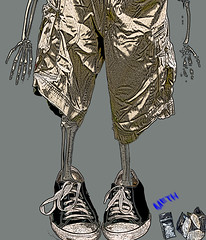Addiction Rehab: Treatment of Co-Occurring Disorders With Combined Therapies Treating More Than the Addiction
Addiction often has a story to go with it. Many people do not just find themselves to be substance abusers one day. There are many times where trauma in one’s life leads to using drugs or alcohol to ease the physical and mental stress or pain that they are living with. Sometimes, these issues may be uncovered and addressed during drug rehabilitation at the treatment center, then followed up on as part of the aftercare plan. Often, many of the triggers for addiction are rooted in co-occurring disorders and both should be addressed as part of the therapeutic process in the treatment center providing patients with new coping strategies support systems.
Co-occurring disorders integrated with combined therapies is a phrase being used to describe treating the addiction and the reasons for why the addiction began. Vista Taos Treatment Center in Taos, New Mexico stresses the positive effects that combined therapies have on patients struggling with addictions that are brought on by life events. Licensed experts help patients deal with broken relationships, childhood trauma, depression and other issues that generally come up in drug rehabilitation. Patients can enter this center, located north of Santa Fe, New Mexico, and receive individualized care. Textbook treatment center programs are a thing of the past. Drug rehabilitation success depends on personalized care plans while in treatment and planned support once a patient leaves the doors.
]]>
What occurs when a patient enters a drug treatment center to begin the healing process is a transformation of their self. Basic 12-step programs are combined with counseling, support, complimentary therapies and sometimes medical consultation. The end result is to help patients achieve a better sense of self worth. Once they complete their program at the treatment center, individuals are better equipped with the tools to address challenges in the world they are returning to. Continuing care following primary treatment has been shown to help the person in the early stages of re-entry into daily living. It shows perseverance to battle the disease that is addiction.
How does someone overcome something like childhood trauma or depression that may have lasted possibly for years or decades while in treatment? The methods to treating a patient’s co-occurring disorders are designed to meet the needs of the patient on a case by case basis. Many times, with combined therapies, a person can begin to let go of the past. The addiction often fuels the emotions associated with the event(s). The person may abuse alcohol or use other substances to mask their emotions, and numb the “hurt”. However, it is a vicious cycle. The person then comes down from the drug and returns to the angry or depressed state of mind, only to fuel the addiction cycle again to return to that euphoric or perceived normal feeling they feel they need to cope with their daily life. This cycle can last for many years, but those looking to find answers and achieve sobriety should know that yes, you can in fact learn to make peace and move on after a stay at a treatment center. It starts with drug rehabilitation, but can and often does continue in outpatient therapies.
Sometimes, people may not know what exactly caused their addiction or when their drugging or drinking became problematic. Others may try to bury the events, but this helps no one. Triggers behind addiction are often uncovered during the drug rehabilitation process. Openly dealing with these traumas under the care of licensed experts is one of the ways that patients can admit, forgive and learn to move on with their lives.
Someone who believes their addiction may be caused by an event in their past should be willing to enter a treatment center to address the event. Yes, these can be painful at first. They may continue to be painful after primary treatment has concluded, but should not be ignored. Ongoing support such as an extended care program, intensive outpatient counseling and support groups may be recommended as part of the aftercare plan. Someone in drug rehabilitation that held onto a life-changing event that is linked to their addiction would only be depriving themselves of the final goal of sobriety. The root of addiction can sit within the past. We cannot change the past, but we can move on as a new and better person.
Vista Taos is a Drug and Alcohol Rehabilitation Center in Taos New Mexico. Vista Taos specializes in drug rehabs including: Alcohol Addiction, Drug Abuse, Cocain Addiction, Heroin Addiction, Prescription drugs, and more.
Addiction Rehab: Drug Rehab
A story I shot and edited. I always like challenging stories. This one in particular I had to disguise the identity of a woman and did it by shooting day for night and back-lighting her. I also had to find a way to shoot drug video. I had my friend Matt play the drug addict in the cocaine video. I put a film grain filter on it and shot it in 24p. It made a neat effect.
Video Rating: 3 / 5
More Addiction Rehab Information…
